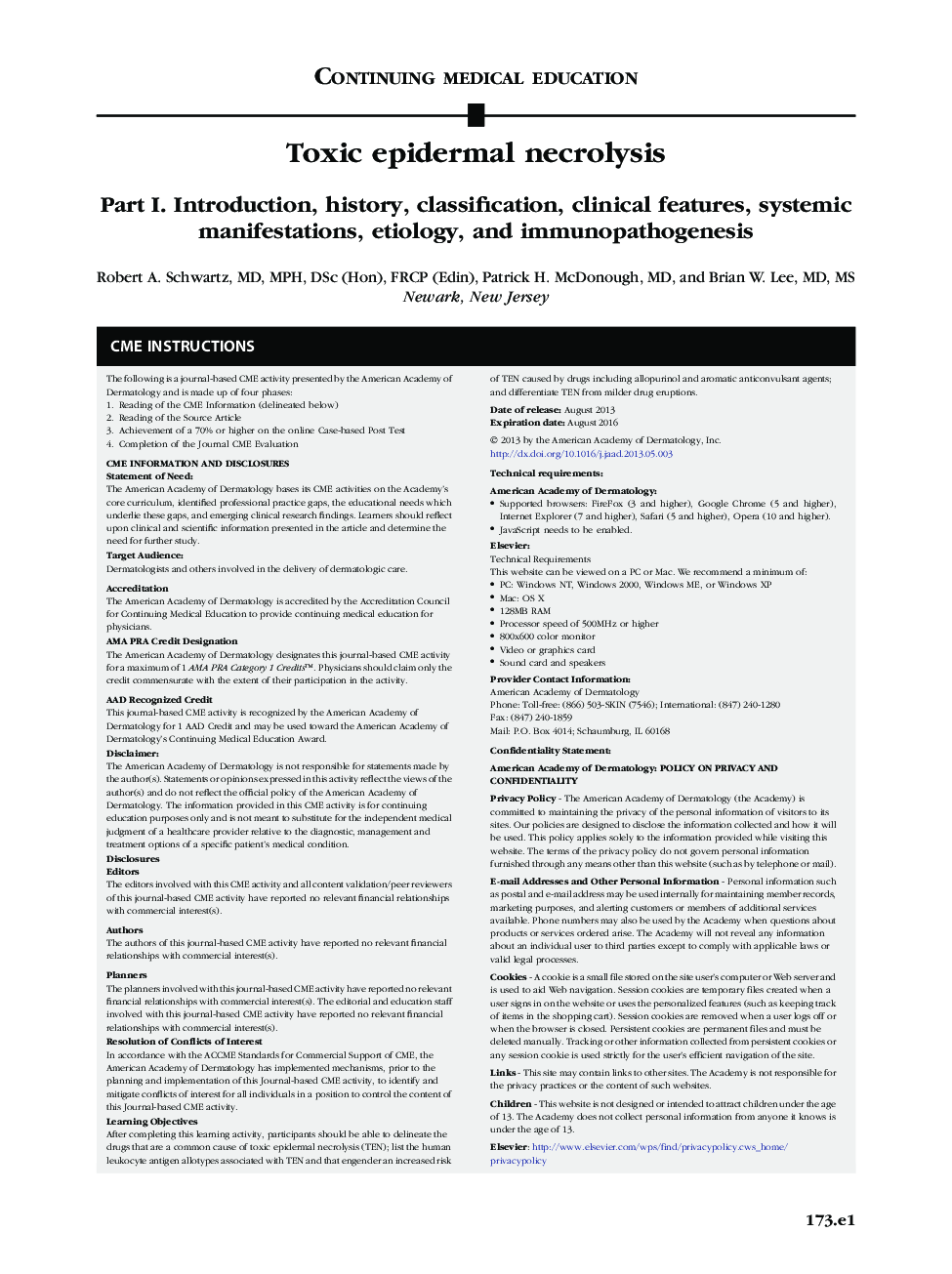| Article ID | Journal | Published Year | Pages | File Type |
|---|---|---|---|---|
| 6073075 | Journal of the American Academy of Dermatology | 2013 | 13 Pages |
Abstract
Toxic epidermal necrolysis is a life-threatening, typically drug-induced mucocutaneous disease. It is clinically characterized as a widespread sloughing of the skin and mucosa, including both external and internal surfaces. Histologically, the denuded areas show full thickness epidermal necrosis. The pathogenic mechanism involves antigenic moiety/metabolite, peptide-induced T cell activation, leading to keratinocyte apoptosis through soluble Fas ligand, perforin/granzyme B, tumor necrosis factor-alfa, and nitric oxide. Recent studies have implicated granulysin in toxic epidermal necrolysis apoptosis and have suggested that it may be the pivotal mediator of keratinocyte death.
Keywords
NF-κBsFasLCD40LAPCPBMCSJSnatural killerBSAHuman leukocyte antigenHLAerythema multiformeApoptosistenbody surface areaPeripheral blood mononuclear cellantigen presenting cellStevens–Johnson syndromeFas LigandFasLnuclear factor kappaBdrug eruptionCD40 ligandmajor histocompatibility complexMHCToxic epidermal necrolysisNitric oxidegranulysin
Related Topics
Health Sciences
Medicine and Dentistry
Dermatology
Authors
Robert A. MD, MPH, DSc (Hon), FRCP (Edin), Patrick H. MD, Brian W. MD, MS,
